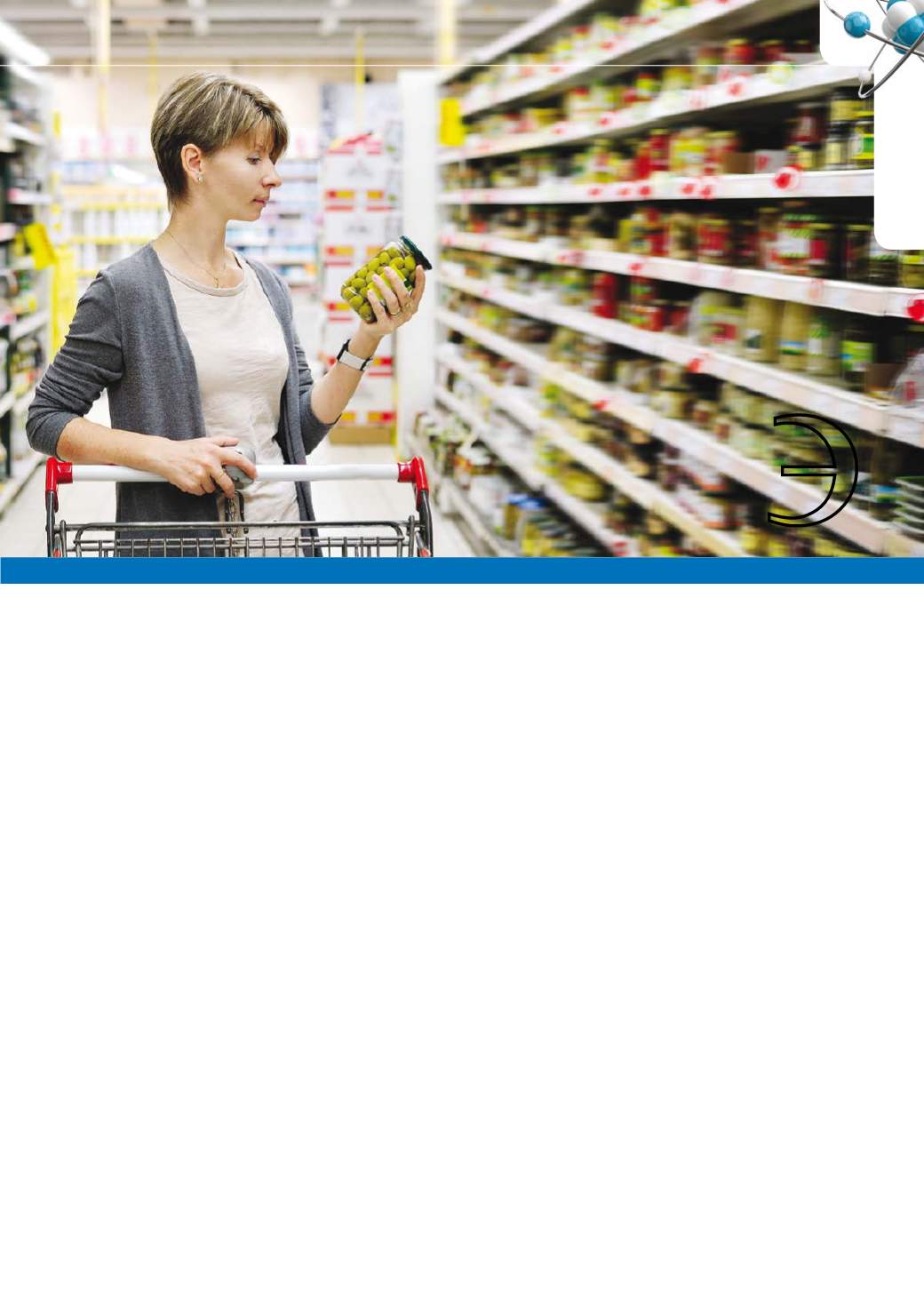

5
Chemical Technology • January 2015
Cover Story
the quantity declared on the package the product comes
in. Although “℮”marking is not compulsory in South Africa
the Trade Metrology division is taking “℮”marking very seri-
ously and have begun to discuss details regarding “℮” mark
registration with retailers, suppliers as well as importers.
Workshops will be held in respect of “℮”marking to inform
consumers and retailers of themeaning of the “℮” mark and
the implications of packaged products bearing the “℮“ mark.
This drive by the NRCS is derived from a goal to align
itself with international standards to ensure uniformity
and standardization in business. A new system recently
implemented by the Legal Metrology Division now places
companies wishing to place an “℮” mark on their packaged
products into three categories:
A: Once off importation
B: Importers who continue to import goods into South Africa
and are registered with a Legal Metrology Authority in
their country.
C: Importers who continue to import goods into South Africa
but are not registered with a Legal Metrology Authority
in their own country but instead claim compliance.
Each of the above categories has specific steps that must be
followed in order to register with the NRCS. Once a supplier
of imported products or importer has applied to register with
the NRCS the inspectors of the Legal Metrology Division will
begin the process of inspecting the suppliers of imported
products or importer’s labels and documents as well as a
sample of the products will be tested. Audits will be car-
ried out and once satisfied that the supplier of imported
products or importer comply with all the requirements as
well as specifications set out in SANS 1841, a certificate
is issued by the NRCS to the supplier or importer who may
then confidently place the “℮” mark on its products.
It may already be necessary for an importer to bear the
“℮” mark on its packaged products in the country of origin
they are importing from. Even though “℮” marking is not
yet compulsory in South Africa, the NRCS will get involved
should one of their inspectors find a product bearing the
“℮” mark but the supplier of the imported product and/
or the importer is not registered with the NRCS and/or it
is discovered the quantity declared on the package of the
product is not what is inside the package.
What happens if a supplier of imported products or
an importer bears the “℮” mark on its product but is not
registered with the NRCS and/or it does not comply with
the quantity requirements?
Inspectors from the Legal Metrology Division at the
NRCS may conduct random checks at any retailers,
whether as part of a routine investigation or by way of a
tip-off. If it is found that a supplier who imports products
bearing the “℮” mark or an importer are not registered
with the NRCS and/or the quantity as declared on the
package is not the quantity of the product, the NRCS
has the power and the authority to issue a Prohibition
of Sale Notice on the supplier or importer, whereby the
product must then be removed from the stores and either
destroyed or returned back to its country of origin. A fine
will be imposed on the supplier or importer and/or the
products may even be blacklisted.
Local suppliers that wish to bear the “℮”mark must also
register with the NRCS and comply with all the require-
ments set out in the SANS 1841.
Labelling specialists such as Hahn & Hahn Attorneys
can assist suppliers of imported products or importers
in compliance with labeling regulations and “℮” mark
registration with the NRCS.
For more information contact the author at janet@
hahn.co.za
z
∋



















